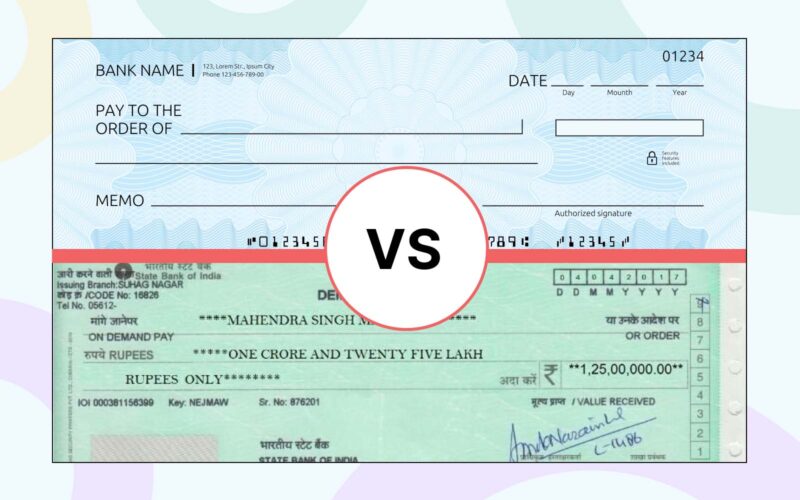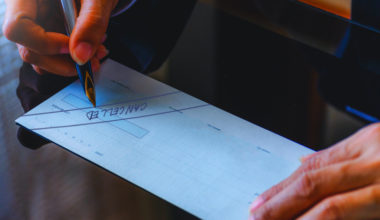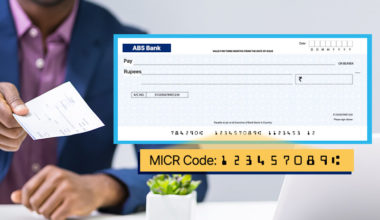Every Indian bank offers the demand draft and cheque facility to its customers to ensure hassle-free transactions. This streamlines the whole process and provides a more flexible and simple banking experience.
Having said that, you must note that these two documents are not the same and learning the critical difference between a demand draft and a cheque is essential to know when and where to use them to maximise their benefit.
Comparison Table Showing the Difference Between a Demand Draft and a Cheque
| Aspect | Cheques | Demand Drafts |
|---|---|---|
| Payment Process | A cheque is a written order from an individual (the drawer) to their bank to pay a specific amount to another individual or entity (the payee). | A demand draft, also known as a banker’s cheque, is a pre-paid instrument issued by a bank on its own behalf, guaranteeing payment to the recipient. |
| Issuer | Cheques can be issued by individuals, businesses, or other entities from their own bank accounts. | Demand drafts are exclusively issued by banks themselves. |
| Payment Guarantee | While cheques provide a means of payment, they may not always be guaranteed. There is a risk of a cheque bouncing if the drawer’s account lacks sufficient funds. | Demand drafts, on the other hand, provide a higher level of payment guarantee as they are pre-paid instruments issued by the bank. |
| Payment Confirmation | Payment confirmation is not guaranteed before submission of the cheque. It is subject to the drawer’s account balance. | Demand drafts provide confirmed payment status before issuance, ensuring that funds are available. |
| Stopping Payment | A cheque can be stopped or cancelled by the drawer under valid circumstances, such as loss or error. | Once a demand draft is issued, it cannot be stopped or cancelled by the drawer. |
| Parties Involved | In a cheque transaction, three parties are involved: the drawer (issuer), the drawee (bank), and the payee (recipient). | A demand draft transaction involves two parties: the drawer (bank) and the payee (recipient). |
| Additional Charges | Generally, issuing a cheque does not involve additional charges, but fees may apply for bounced cheques. | Banks may charge a fee for issuing a demand draft, often depending on the draft’s value. |
| Security and Risk | Cheques can be risky if they are not marked “account payee” as anyone can cash them, posing potential security risks. | Demand drafts provide higher security as they can only be claimed by the designated payee, reducing risks of unauthorized use. |
| Acceptance in Transactions | Cheques may not always be widely accepted in business transactions due to concerns about bouncing and security risks. | Demand drafts are commonly accepted in business transactions due to their guaranteed payment status. |
| Dependability in Transactions | Cheque transactions may lack reliability due to the possibility of bounced cheques or delays in clearance. | Demand drafts are highly reliable, especially in the digital banking era, offering swift and secure payment transactions. |
Though increasingly convenient, both cheques and demand drafts are slowly getting outdated because of their slow processing periods. Now, you have instant banking solutions like NEFT and RTGS mechanisms that do not get dishonoured and may be availed from anywhere.
Cheques: Definition and Usage in Financial Transactions
A cheque, also spelled as “check” in American English, is a written order or negotiable instrument issued by an account holder of a bank, directing the bank to pay a specified sum of money to a designated recipient or “payee.” Cheques are commonly used as a form of payment, allowing individuals and businesses to transfer funds from one bank account to another in a secure and convenient manner.
Key features of a cheque include:
- Drawer: The person who writes the cheque and holds the bank account from which the funds will be withdrawn is known as the “drawer.”
- Payee: The individual, organization, or entity to whom the payment is being made is referred to as the “payee.” The payee’s name is typically written on the cheque.
- Amount: The numerical and written amount of money to be paid is specified on the cheque. The written amount is important in case there is a discrepancy between the two.
- Date: The date on which the cheque is issued is indicated. This date is used to determine the validity and timing of the payment.
- Signature: The drawer’s signature is required on the cheque to authenticate and authorize the payment. This signature must match the specimen signature on record with the bank.
- Bank Details: The cheque includes details of the bank and branch where the drawer holds an account. This information is used by the bank to identify the account from which the payment will be debited.
- Crossing: A cheque can be crossed by drawing two parallel lines across the top left corner. This signifies that the cheque must be deposited into a bank account and cannot be encashed directly.
- Bouncing: If there are insufficient funds in the drawer’s account or if there are other issues, the cheque may be returned unpaid, commonly referred to as a “bounced” or “dishonored” cheque.
Types of Cheques
All of the cheque variants eventually depend on the nature of the issuer and its drawee. While exploring Indian bank cheques, you are most likely to come across the following-
| Type of Cheque | Description |
|---|---|
| Bearer Cheque | Payable to the person who presents it; does not require endorsement. |
| Order Cheque | Payable only to the person or organization named on the cheque; requires proper endorsement. |
| Crossed Cheque | Contains two parallel lines across the top left corner, indicating it must be deposited into a bank account, not cashed over the counter. |
| Open Cheque | A cheque that is not crossed, can be encashed by anyone presenting it at the bank. |
| Post-Dated Cheque | A cheque with a future date, cannot be cashed until that date arrives. |
| Stale Cheque | A cheque presented for payment after a certain period (usually 6 months) from the date of issue. |
| Self Cheque | A cheque made payable to oneself, often used for withdrawing money from one’s own account. |
| Traveler’s Cheque | Preprinted cheques used for travel, can be replaced if lost or stolen. |
| Certified Cheque | Issued by a bank with a guarantee of sufficient funds, often used for large transactions. |
| Banker’s Cheque | Issued by a bank, drawn on its own funds, used for secure payments, also known as a cashier’s cheque. |
| Gift Cheque | Used as a gift, can be exchanged for goods or services at specific merchants. |
| Cancelled Cheque | A cheque that has been marked as cancelled and is often used for verification of account details. |
Understanding Demand Drafts: Features, Benefits, and Usage
A demand draft, often abbreviated as DD, is a type of financial instrument issued by a bank or financial institution. It is a pre-paid negotiable instrument, similar to a check, used for making payments. Demand drafts are considered a secure and reliable method of transferring funds, especially for large amounts or when a high level of certainty is required in the payment process.
Key features of a demand draft include:
- Prepayment: The issuer of the demand draft (usually a bank) collects the entire amount of the draft upfront, ensuring that the funds are available before issuing the draft.
- Payee specification: The demand draft specifies the name of the payee (the person or entity who will receive the payment) and is usually made payable to a specific individual, organization, or entity.
- Crossed format: Demand drafts are typically crossed, which means they can only be deposited into a bank account and cannot be directly encashed over the counter like a regular check.
- Secure payment: Demand drafts are considered a secure payment method because the funds are already collected by the issuing bank, reducing the risk of dishonored payments due to insufficient funds.
- Validity: Demand drafts usually have an expiration date, after which they may be subject to additional processing or revalidation.
- Usage: Demand drafts are commonly used for various purposes, such as making payments for educational fees, purchasing property, settling bills, or conducting business transactions.
- International transactions: In international trade, demand drafts can be used for cross-border payments, acting as a secure way to remit funds to another country.
Types of Demand Draft
Precisely, you are expected to witness two separate forms of demand drafts (DDs). These include:
- Sight demand draft
You may find using this instrument to be highly beneficial while ordering items from a business or individual situated abroad. Once the authorising bank issues this kind of demand draft, the international vendor gets his payment swiftly. This allows him to release the commodities faster and assume full ownership of these goods until the beneficiary receives them.
- Time demand draft
These instruments come in handy when you need to schedule any future payment. The drawee won’t be able to claim their money immediately after the bank has already issued the DD.
Some international deals, particularly the import-export segment, necessitate the use of these demand drafts. Generally, the drawer’s bank does not approve the quoted payment at least 15 days after the ownership of goods or services has been transferred.
Conclusion:
Demand drafts (DDs) offer versatile payment options, ranging from immediate settlements to scheduled transactions, accommodating various financial needs. Cheques, while impacted by digital trends, remain valuable for their reliable record-keeping and widespread acceptance. Together, DDs and cheques continue to play pivotal roles in modern transactions, contributing to financial flexibility and efficiency.








